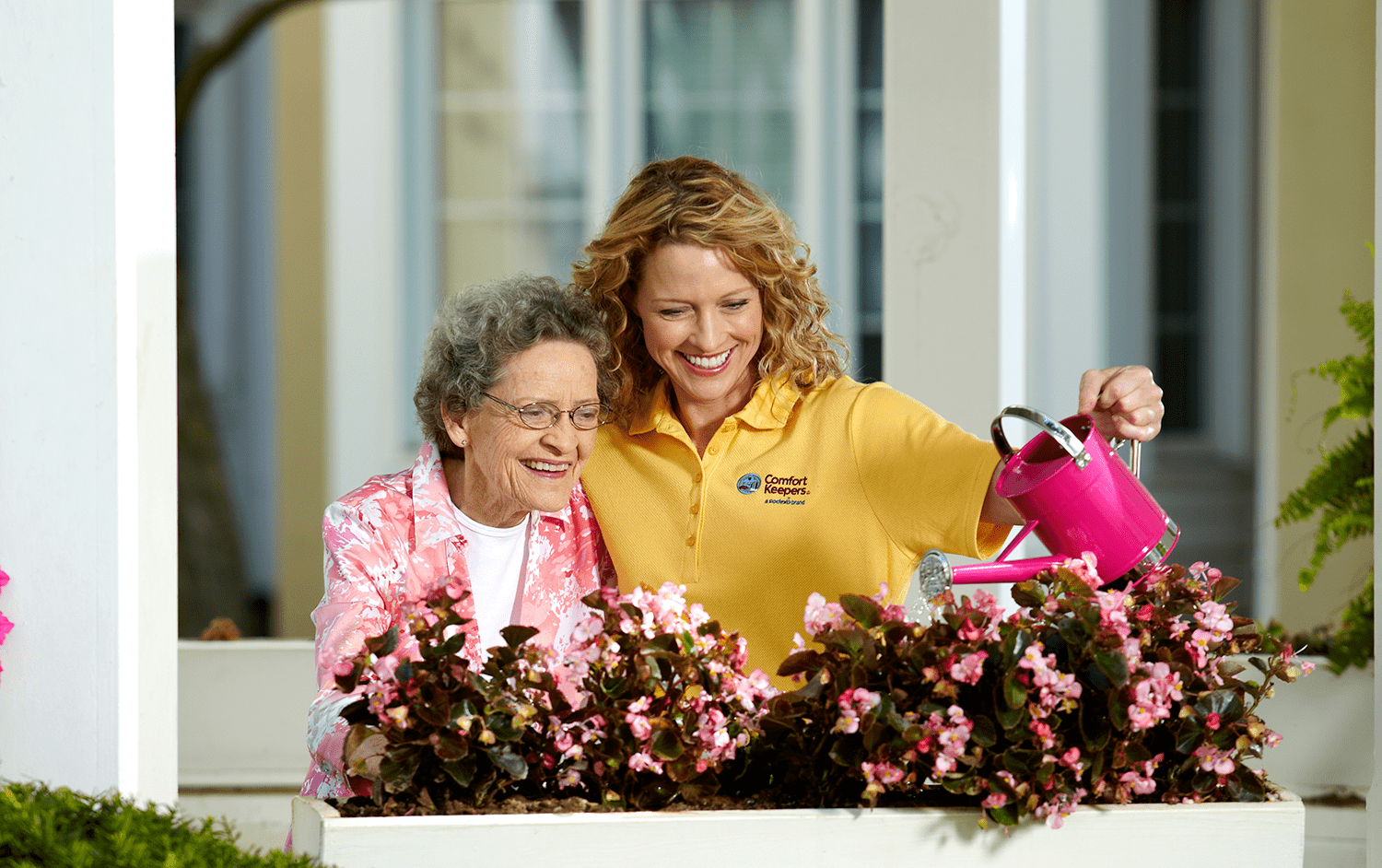Housing Options for Seniors
Seniors and their families have a wide variety of housing options to consider depending on the senior’s health status, mobility and need for care. In this article, Comfort Keepers® explores senior housing options: from staying in the comfort of their own home to moving to a Long Term Care Home.
Home Care Services
If a senior’s medical needs are minimal and the senior’s primary need is assistance with activities of daily living, home is a good option. There are various types of support services needed to promote independent living. If help is needed in assessing a family member’s care needs, a geriatrics care manager can help. Or call on Comfort Keepers. Our Client Care Managers will provide in-home assessments to determine care needs.
In-home service options range from offerings like home-delivered meals or transportation to personal care, companionship and homemaking care to nursing care.
While staying at home can be less expensive than living in a senior community, modifications may need to be made to the home to accommodate the changing needs of the senior (see “Adapting Homes to Seniors’ Changing Needs” at the end of this article).
Senior Housing
These are apartments or condominiums exclusively for people age 55 and over who can live independently. Services vary from site to site but generally do not provide meals or personal care services. However, they often provide social activities or transportation to movies, sports events and other social opportunities.
Independent Living Communities
As the term implies, these communities, which consist of maintenance-free homes or apartments are designed for independent, active seniors. Residents furnish the homes or apartments themselves. The communities generally offer 24-hour security, community centers, fitness centers and/or pools, and other types of services.
Independent living communities generally do not have 24-hour health care support, but such services may be purchased separately from outside sources or the community itself. Some include daily check-ins, while other communities charge for daily check-ins as an extra service.
Retirement Residences
Residents of retirement residences do not require the skilled medical services of a nursing home yet have difficulty living independently and don’t have the support they need to live at home. Retirement residences often provide three meals a day in a common dining room in addition to assistance with activities as housekeeping, laundry, dressing, bathing, and managing medications, and 24-hour security and staff availability.
They also provide access to health and medical services, as well as medical supervision or assistance. Transportation may be included in the fee.
Long Term Care Homes (Nursing Homes)
Long Term Care Homes are designed for people who require nursing care; personal care services, such as help with dressing, bathing, eating, and toileting; physical, occupational and speech therapy; social activities; and supervision within a secure setting on a 24 hour basis. Three meals a day are served in the dining room or the senior’s room. In some provinces eligibility for a long term care home is determined by the government
Alzheimer’s/Memory Care
These sites may be dedicated units in retirement residences, Long Term Care Homes, or they may stand alone. In any case, they meet the special needs of persons with Alzheimer’s disease and other dementia-related conditions.
They are staffed and designed to provide 24-hour security and care for persons at all stages of dementia. They provide nursing care as well as therapy and activities that promote the quality of life of persons with dementia.
Some in-home care providers, such as Comfort Keepers, also provide Alzheimer’s and memory care services as well as in-home technology solutions that enable persons with dementia to continue living at home.
Hospice Care
Hospice care for persons diagnosed with a terminal illness may be provided at home, in a Long Term Care Home, and in a Hospice Facility. Hospice includes medical and nursing care, as well as therapy, emotional, spiritual and bereavement support. Comfort Keepers works in partnership with hospice care providers to offer supportive in-home care services for persons receiving hospice care and their families.
Adapting Homes to Seniors’ Changing Needs
More Canadians are choosing to “age in place.” That is, they opt to stay in their homes rather than move to alternative retirement settings.
But that often means they must modify their homes so it’s not a danger to their safety and health when their physical abilities change.
A new career field has risen to address this need: the Certified Aging-in-Place Specialist (CAPS), a program of the National Association of Home Builders (www.nahb.org). CAPS certified specialists assess homes to identify and recommend modifications to prevent injuries from falls and other risks.
According Veteran Affairs Canada, one third of Canadians age 65 and over fall each year. Veteran Affairs Canada adds that environmental factors lead to about half of all falls that occur at home. These include slipping and tripping hazards, poor lighting, or lack of needed modifications, such as bathroom grab bars, handicapped showers, stair railings and ramps. For more information see the Veteran Affairs website on their falls prevention initiative.
Home modifications help seniors maintain quality of life by preventing injuries and loss of independence from early admission to an assisted living or long-term care community.
- Following are examples of commonly recommended modifications:
- Install grab bars for toilets and tubs and install a walk-in tub and/or tub seat
- Remove unnecessary throw rugs and fasten down rugs or floor runners to prevent slipping
- Move furniture to create clear walking paths
- Keep objects off the floor and coil or secure cords to the wall to prevent tripping
- Replace knobs with lever door handles
- Apply non-slip tape on uncarpeted indoor and outdoor steps
- Replace standard light switches with rocker-style switches
- Increase the width of doorways and hallways to accommodate wheelchairs, and where possible, lower sinks and countertops
- Move often used items to lower cabinets to avoid the need for step stools
- Repair or replace loose handrails and install adequate lighting in stairways
- Install an elevator or chair lift
- Install an elevated dishwasher or one with drawers for easy access
- Replace old stoves with induction cook tops to help prevent burns
- Replace ceramic tile floors with hardwood or vinyl for safe standing
Shedding Light on Home Modification
When modifying a home for a senior do not forget the importance of good lighting. Seniors need two to three times as much light to see as well as younger people.
Good lighting—in the form of natural light—provides seniors advantages besides safety:
- Sunlight produces a good dose of Vitamin D, which helps the body absorb more calcium to strengthen teeth and bones. Choose window treatments that allow in sunlight, without glare.
- Daylight also uplifts psychological health. It lessens the energy-zapping effects of Seasonal Affective Disorder (SAD) and other forms of depression.
Individualized Home Care Options
Long-Term Home Care, 24 Hour Home Care & Short Term Care Options Customized for You






